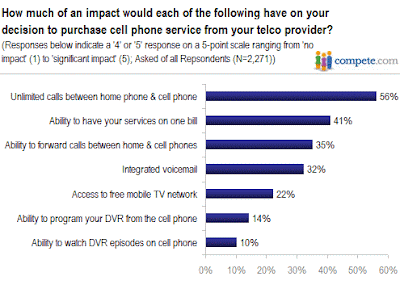 These terms (and ideas) have been pioneered by accenture:
These terms (and ideas) have been pioneered by accenture:"Trivergence" describes an emerging device architecture where the network is used to separate the physical device from its data and its controls.
But normal people don’t go around discussing architectures. For most people, a device is just a device – even if it depends on a global network, massive datacenters, and tons of software residing outside the device itself for its functionality.
For example, most reviews of Apple’s latest iPod focused on the touch screen, battery life, picture quality, and look and feel. But it is the "outside the box" elements that sync your music library, deliver Podcasts and movies, learn your preferences, and, in general, turn the iPhone into something far beyond an old fashioned "portable music player."
We need some way to communicate that these new devices are more than just devices. According to Webster, a "device" is "a piece of equipment or a mechanism designed to serve a special purpose or perform a special function." Triverged devices are not a "piece of equipment" – they are one piece of a complex system brought together by a network.
To get this idea across, we need to say it in a word rather than a sentence. And I have a suggestion for that word: "Tridget."
These terms came to my attention from an article in telecoms.com which contains Interview with Andy Zimmerman, head of Accenture Global Communications. Summary of important point from that as follows:
"They're trying to imitate the Apple model, not only with the UI but also the services behind it. Right now, I feel like there is a device renaissance going on, where the device vendors are the ones that are attracting the imagination and attention of the consumers and, frankly, the carriers are not really doing that."
##
Ultimately, Zimmerman believes that no one sector - be it the vendors, the internet players, the carriers - will truly be able to dominate the others. The inter-dependency is too great, he says. That said, he feels the device players have the upper hand because, "so much of the user experience around mobile tends to be hardware related."
If the carrier community has a job ahead of it, he says, it is to learn to be comfortable with its unique attributes and to learn to effectively exploit them. Operators have assets relating to the end user - like presence, identification, authorisation and credit information - that give them a richer customer relationship than other members of the value chain, says Zimmerman. "But they haven't been particularly proactive about bringing those to the table," he says.
"I have a feeling that the carriers don't appreciate what they could provide that could be enabling for a lot of different kinds of service providers. Maybe they should be thinking about getting a dollar from every ten dollar transaction, rather than getting the whole ten dollars..."
##
Zimmerman talks about 'Tridgets', a "combination of content, device and the software that is used to manage the service." A mobile phone is a tridget, as is an iPod. So to is a wifi-enabled pacemaker, implanted next to somebody's heart. "In 20 years there could be a trillion tridgets in the world to be managed, all of which will be network enabled, and almost all of them mobile," he says. "If you can get a dollar a year out of each one, in terms of some information or service around the network to enable it, that's $1tn, which is the size of the current telecommunications industry."
##
Despite this, he argues that there is a rough 50/50 split in the carrier community today, with one half ready to accept a redefined role, and the other convinced that it needs to play end-to-end to avoid being marginalised. "It depends on the individual personalities, and where their company is at the moment," he says. "There are a fair number of executives out there who say that they're never going to be in the [end-to-end] business, and that they should focus on the enabling business."
These are the players that are positioning themselves effectively and pragmatically, he suggests
##
"My sense is there's still some room for consolidation among around software and among second tier vendors. Cisco has done a tremendous job in terms of M&A but they have a particular focus on emerging tech and much smaller companies. It's interesting that they have chosen not to do a big merger, even when there have been assets out there which, when you look at the relative valuation, would have been easy for them to pick up."
##
At the Mobile World Congress, Vodafone CEO Arun Sarin made a plea for consolidation in the handset operating system space, arguing that there are too many options to allow for the creation of an ecosystem in which interoperability and universal application development thrive. Zimmerman is no more optimistic about the chances here:
"With smartphones, there's so much still to be determined in terms of who's going to dominate. So I can't see the leading players gravitating around particular standards to help world hunger, as it were, if they think there is still a chance of picking up market share with their own products. The dynamic right now is not quite right for that sort of thing."
You can also read his article in MWC here. A very interesting point from that:
But the Tridget opportunity is too large to be dominated by any one company. David Clark, one of the architects of the original Internet and now a professor at MIT, has predicted a trillion networked devices in 15 to 20 years. A trillion is a very large number and it implies that Dr. Clark expects almost all electric devices – maybe even down to light bulbs – will evolve into Tridgets.
You may also be interested in reading the following bloga from Accenture:
















